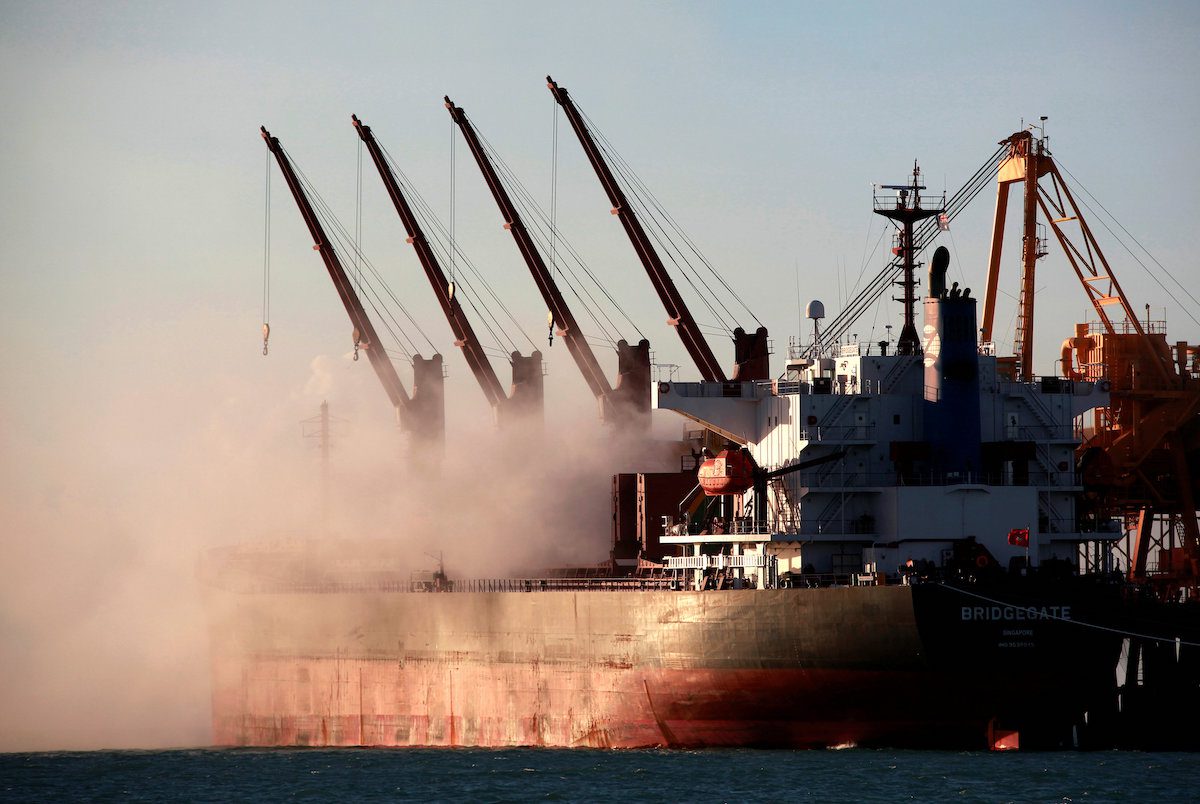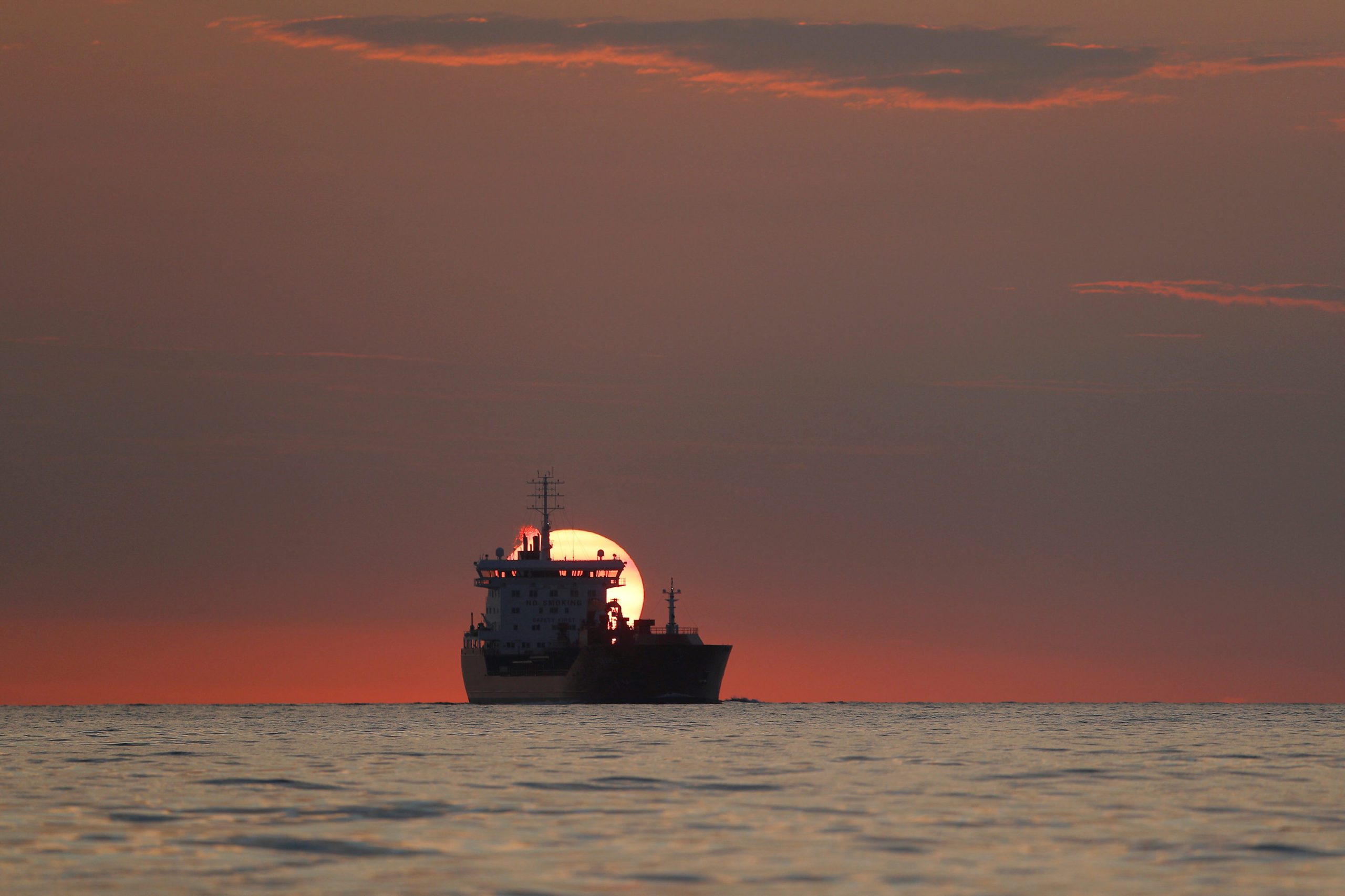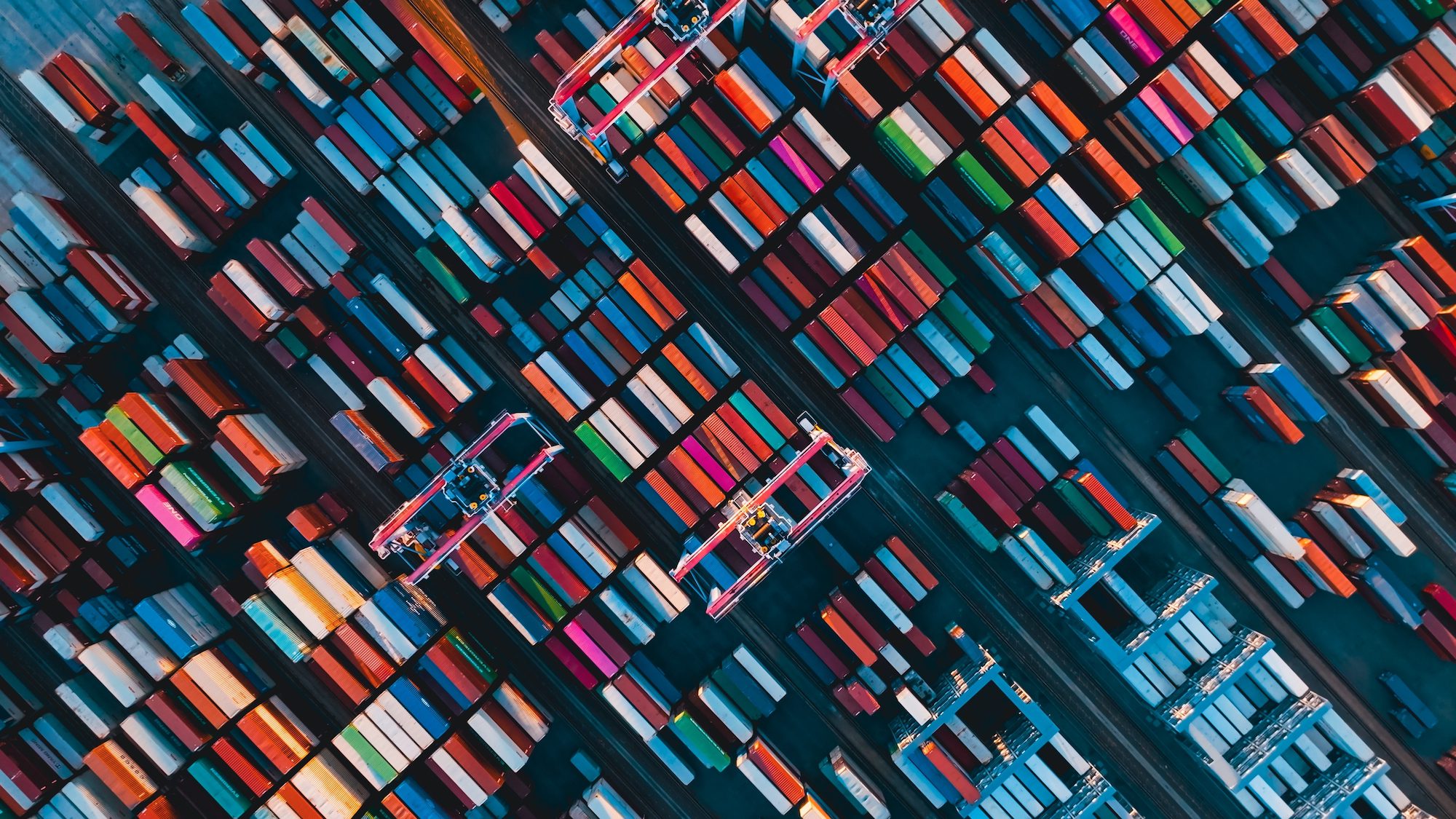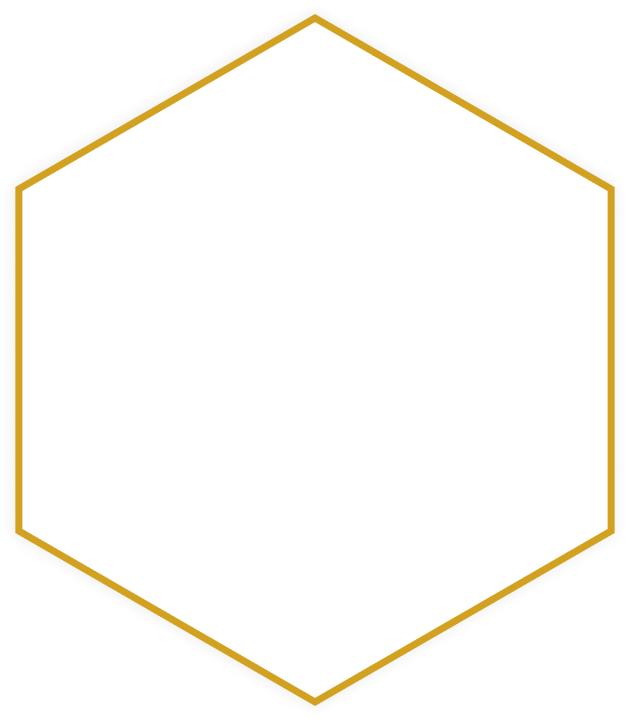By Alfred Cang (Bloomberg) — When Sun Xiushun began to travel to Guinea just over a decade ago, he was an unknown shipowner desperate to stay in the aluminum game. He found the West African nation in the grip of an Ebola epidemic, with even the most hardened investors pulling out.
Sun — a Shandong native and long-time partner of aluminum giant China Hongqiao Group — dug in.
He needed a source of bauxite to replace Indonesia, a top supplier of the ore preparing to ban exports, and that meant connecting deposits in Guinea’s forested interior to a vast ecosystem of smelters in China. It took barges, floating cranes and the first new rail link in half a century, but the country became the single most important exporter and a vital supplier for the top metals market globally.
Now the one-time merchant seaman has repeated the feat, effectively unlocking the world’s largest untapped iron ore deposit with a more than 600-km (roughly 370-mile) railway across the country, bridges, tunnels and a purpose-built port — likely making himself a billionaire in the process.
One of the most storied projects of recent decades, Simandou, tucked away in Guinea’s mountainous south, lay in a state of suspended animation for years, becoming a byword for the Western industry’s apparent inability to build large-scale operations on time and on budget.
This month, three decades after Rio Tinto Group was first given an exploration license, loading is beginning on the first shipment to be sent out from the new port of Morebaya — in large part thanks to Sun. The $23 billion project has become a study in why China continues to dominate African infrastructure. For many Western mining executives and advisors involved, it has also made a powerful case for collaboration with Chinese operators, even at a time of heightened geopolitical tension.
“For years, the challenge at Simandou was not the ore itself, but the formidable infrastructure needed to reach it,” said Qiang Fu, economist and professor in strategy and policy at the National University of Singapore. “By treating the railway and port as the strategic foundation rather than a secondary requirement, Sun redefined the venture and pushed it forward at a pace few expected.”
Sun’s methods are not those of large diversified miners. There is typically limited subcontracting and his personal interest, given a share of a portion of the main deposit and significant funds invested, encouraged him to press ahead even before others had signed on the dotted line. That urgency came with shortcuts — and reports of worker accidents. Still, by the time a co-development deal was signed in 2023, unlocking capital from other partners, nearly half the infrastructure was complete, at a lower-than-expected cost.
His goals and those of the Guinean government required him to move at speed, people on his team said, asking not to be named as the details of the negotiations are not public. And Sun did.
“Trading action for trust, and trust for resources, that’s the key strategy,” he said in a 2016 speech to students, recounted by people who heard it. “By fulfilling our promises, we earned high recognition from the government — and in return, access to the resources we needed.”
Simandou — so enormous and so rich that it could account for a tenth of the world’s supply of the steelmaking ingredient — has had an exceptionally fraught history. Its remote location makes access to the coast difficult and logistics, the toughest part of the challenge in any bulk-commodity operation, painfully costly. Add to that two coups, market vicissitudes, unwelcome government interventions and several corruption investigations. Real advances have taken years.
Rio initially held the entire deposit, but in 2008 it was seized by Guinea’s then president, unhappy with slow progress. A portion was handed to Israeli mining magnate Beny Steinmetz, who later brought in Brazil’s Vale SA. That venture ended in legal battles and graft allegations, and Steinmetz eventually agreed to walk away. Sun, having earned government trust with his bauxite operation, stepped in with his Singapore-based Winning International Group, in a consortium that took Simandou’s northern blocks in 2019.
Now surrounded by Chinese partners and rivals, Rio shares the southern half with Aluminum Corporation of China, or Chinalco, and other smaller holders. Guinea holds a minority stake in each half.
Rio Tinto declined to comment. Winning didn’t respond to emailed queries.
“Dealing directly with China is a way for us to deal with those that will provide funding for a project and also be the market for the project, making it bankable,” Abdoulaye Magassouba, mining minister until 2021, said in a January 2025 speech at Williams College in the US. And investors who are happy to dig even before all the paperwork is complete, he said — in an apparent reference to Sun — encourage confidence.
Digging In
Sun was born in 1964 to a farming family in Shandong and trained at a maritime school. Eager to travel, he spent nearly a decade working as a seaman and mechanic before rising through the ranks and eventually moving ashore to a unit of Cosco Shipping Holdings Co. in the northern Chinese port of Qingdao. Friends say those years left him with a straight-talking, direct manner, and with ambitions — but with little desire to stand out. An abstemious figure, he prioritizes home life in Singapore over the lengthy banquets favored by Chinese executives of high standing, often dispatching deputies to events in his place.
After Sun set up Winning in 2002, his mainstay was transporting bauxite for China Hongqiao — a business relationship that has meant close ties with the prominent Weiqiao family, who have close ties to the aluminum giant. It ultimately led to a connection with Zhang Bo, now chairman of Shandong Weiqiao Pioneering Group Co., who became one of his strongest allies and a source of significant financial support.
But his real break came after 2013, as Indonesia moved toward a bauxite ban. Sun lost no time in pivoting to Guinea, where he recognized both the poverty and the solution he could provide — infrastructure. Those experiences and connections laid the ground for what followed.
Building a bauxite port in the country’s north, he struggled to drag hundreds of thousands of tons of material onshore in what was a shallow basin. He flew in a 12-person specialist crew from the Chinese port of Yantai to survey tides, anchorages and approaches. Tugs had to haul barges to the shoreline, pull cargoes in, check for damage, and head back out.
It was, as one of his team described later, duct-tape logistics at an industrial scale.
But the bauxite link that emerged earned valuable trust. Construction began in March 2019 and completed in June 2021. At the inauguration, Magassouba, then still minister, shook Sun’s hand. “Since I was born, this is the first time Guinea has seen a railway completed and opened,” he said, according to people present at the gathering.
Sun saw the moment as a turning point. “What changed Simandou’s fate was that they saw our capability and strength,” he said in a rare newspaper interview earlier this year.
Rivals and traders, though, were skeptical back in 2019. Apart from his recent aluminum win, Sun had limited experience in mining. Bankers in Singapore and China were unwilling to back him or his consortium, formed with long-standing aluminum partner Hongqiao, and, later, with China Baowu Steel Group. So he poured in his own money, and relentlessly squeezed costs.
Instead of hiring a single engineering, procurement and construction company — the industry norm — Sun turned his company into a builder and operator, splitting work among dozens of specialist teams, with experienced Chinese crews working along thousands of local workers, people who worked on the project said. On the ground, he used the same hardline methods that served him well in the early years in Guinea, while building out bauxite infrastructure — hard milestones, daily reports and an eye only on what had been done that day. If a target slipped, teams were expected to fix it.
But Simandou was a challenge of a different order — where the Dapilon–Santou bauxite line ran for 125 km, the iron ore project was to be roughly five times that, and in far more complex terrain. Sun used fewer middlemen but more contractors, including units of China Railway Engineering and China Harbour Engineering. The pace rattled large Western incumbents, advisors said.
Again, Sun’s methods were idiosyncratic, reversing the traditional mining project timeline, which requires reserves to be confirmed first, then feasibility to be studied, before companies turn to logistics and infrastructure. Sun, playing to his strengths, turned to logistics first, and he used Chinese standards, Chinese cut-and-paste designs, Chinese materials and Chinese crews — just as rivals did in Indonesia and the Democratic Republic of Congo. He was on site himself almost throughout, thanks to a regular commute from Singapore to Conakry, via Paris.
A decade ago, he had kept working even through the Ebola epidemic with strict rules and three on-site doctors. Those methods were used again during the Covid pandemic, with bubble zones and mobile PCR testing stations to keep crews insulated and the project on track.
Speed and Sun’s relentless approach did not always produce smooth results, as the project advanced through villages in a rich and previously isolated equatorial ecosystem. There were fatalities, and the Guinean government said earlier this year it was looking into safety practices. (The Winning consortium has said previously that it works to constantly improve safety protocols and “ensure they meet international standards.”)
Still, Rio executives, for whom Simandou has been a long-standing headache as well as a tantalizing prospect, took notice of the advances after a trip to the bauxite operation in the north, and approached the group, according to people familiar with the conversations. Sun was not receptive. Executives on his team later recalled that he felt a partnership with the world’s second-largest miner meant he would get caught up in red tape, squandering the momentum he had built up.
A new Guinean government that took power after a 2021 coup, however, was eager to push development of the country’s flagship asset with a single, jointly backed rail line to the coast serving both halves of the deposit. Officials brokered a meeting with the then-chief executive officer of Rio, Jakob Stausholm, at the presidential palace. With an eye on the country’s uncertain politics, Sun took the hint.
To operate the shared corridor, the parties formed Compagnie du TransGuinéen, with state participation alongside Rio’s Simfer and Winning Consortium Simandou.
When loading accelerates and shipments finally begin, all parties will claim a much-needed victory — a gargantuan new mine for Rio, with some of the highest grades around, and a high-profile infrastructure win for China at a time when its big-ticket spending in Africa has cooled. Vice Premier Liu Guozhong will attend the official inauguration this week as President Xi Jinping’s representative.
“Simandou has presented an opportunity for China to remind the world that they are involved in Africa, and in a big way,” said Tara O’Connor, managing director of Africa Risk Consulting, who has followed the mine’s development for years. “The project is probably even more important to them now in the Trump era of tariffs and trade wars. It’s a show of force.”
To contact the author of this story:
Alfred Cang in Singapore at [email protected]
© 2025 Bloomberg L.P.

 Join The Club
Join The Club











